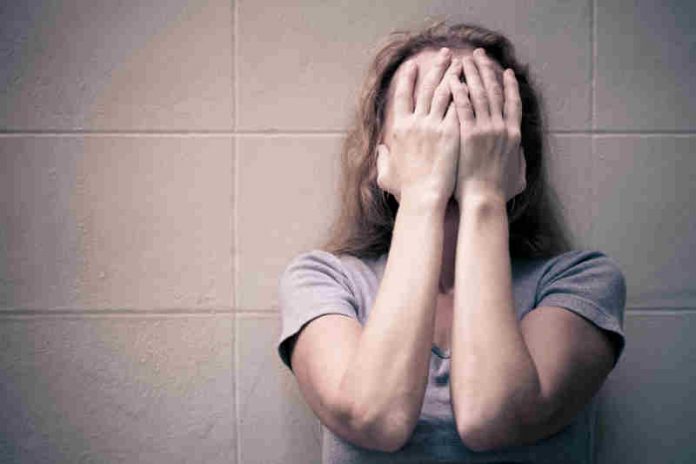
While it’s true that there’s lots of medical conditions?which affect women and men similarly, statistics say that there are numerous which can be mostly welcomed in women.
From the alterations which a woman explains when pregnant or even the hormonal upheaval that her body undergoes during menopause- most of hese put her at the and the higher chances of struggling with certain health concerns.
#div-gpt-ad-1525702346961-4
margin: 10px 25px 10px 0px;
#div-gpt-ad-1525702502842-1
margin: 10px 25px 10px 0px;
Here are five such poor health which can be commonly seen in women.
1. Osteoporosis
Did you know almost 80 % patients who are from osteoporosis in the usa are women? No less than 50 percent women who are across the day of 50 end up breaking or fracturing a bone due to this fact. Like a woman ages, the production of the hormone estrogen decreases, which rips the bones in the protective layer it provides to them, driving them to very likely to loss and breakage.?[1]
#div-gpt-ad-1525702346961-5
margin: 10px 25px 10px 0px;
#div-gpt-ad-1525702502842-2
margin: 10px 25px 10px 0px;
Speak on your doctor about calcium and vitamin D supplements that is right for you, spend an afternoon in natural sunlight and even include routine workouts inside your daily regime.
2. Migraines
If you may be a woman, you happen to be 3x prone to experience a migraine attack when compared to your male counterparts, its no wonder that a growing 17 percent of girls suffer from these pounding headaches. In contrast only 6 percent of males purchase one. Most often, the migraine attack strikes just before, during or soon after the menstrual period.?[2]
#div-gpt-ad-1525702502842-3
margin: 10px 25px 10px 0px;
However, it does not imply you must pop an all-natural supplement every time you obtain a migraine. Several herbs such as feverfew, rosemary, and yarrow are competent in lessening the pain sensation and curtailing their frequency. Confer with your doctor before start employing any herb.
3. Urinary Incontinence
Urinary incontinence?affects twice the sheer numbers of women than men. It’s a problem whenever your bladder muscles become weak and can’t keep the urine, creating a leakage. A lot of the significant reasons that could cause bladder control problems girls are pregnancy, menopause and the decrease in the hormone estrogen.[3]
#div-gpt-ad-1525702502842-4
margin: 10px 25px 10px 0px;
Doing kegel exercises can help strengthen the muscles inside your bladder and improve conditions of bladder control problems.
4. Sleep Disorders
If you are a woman, your odds of a restful sleep are lesser in comparison to that surrounding men. Various modifications in one’s body, including puberty, pregnancy, monthly menstrual cycles, and even menopause can transform your sleep quality additionally, the capacity to fall into deep sleep.?[4]
Try herbs for example valerian, passion flower, California poppy, ashwagandha, catnip, kava kava and even magnolia bark that can help you relax and go to sleep quickly and as well help your sleep quality.
5. Multiple Sclerosis
Multiple sclerosis is really a symptom in how the protective covering of one’s nerve cells get damaged and cause disturbances in your neurological signals. The disorder may lead to feelings of numbness in the limbs and, in severe cases, also can cause paralysis. It’s more frequent in women when compared to men.[5,6]
There is not a answer to ms yet, but with respect to the symptoms, a medical professional attempt and manage the situation as well as possible.
For more interesting stories, visit our well being page. Read more about Women’s Health here.
References:
1. Prevalence of osteoporosis risks and treatment among women aged 50 years and older. 1: Kirk JK, Spangler JG, Celestino FS. Prevalence of osteoporosis risks and treatment among women aged 50 years and older. Pharmacotherapy. 2000 Apr;20(4):405-9. PubMed PMID: 10772371. (Accessed 29 Oct 2015)
2. Migraine prevalence: a review of population based studies. 1: Stewart WF, Shechter A, Rasmussen BK. Migraine prevalence. An assessment population-based studies. Neurology. 1994 Jun;44(6 Suppl 4):S17-23. Review. PubMed PMID: 8008222. (Accessed 29 Oct 2015)
3. The prevalence of urinary incontinence. Nitti, Victor W. “The Prevalence of Bladder control problems.” Reviews in Urology 3.Suppl 1 (2001): S2
